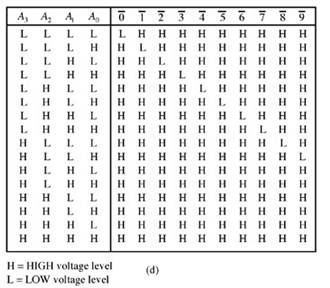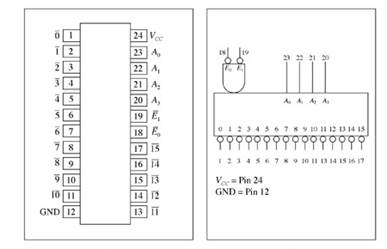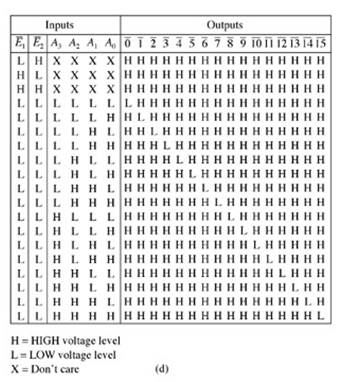Decoding
- A decoder circuit converts a binary code on the input to a single output representing the numeric value of the code.
- A binary-to-octal decoder converts 3 binary bits into a 1-of-8 output.
- Decoders can be designed with either active high outputs or active low outputs.

- A BCD decoder converts a 4-bit BCD code on the input to a 1-of-10 output.

- A hexadecimal decoder converts a 4-bit binary code on the input to a 1-of-16 output.
- Any decoder that uses bubbles on the outputs has an active low output. No bubbles mean that the outputs are active high.
- Many decoder chips have a separate enable input to turn the chip on and off.
- The 74138 IC is an octal decoder with three enable inputs and active-low outputs.

- The 7442 IC is a BCD decoder with active-low outputs.


- The 74154 is a hex decoder with two active-low enable inputs and active-low outputs.


return to top | previous page | next page







